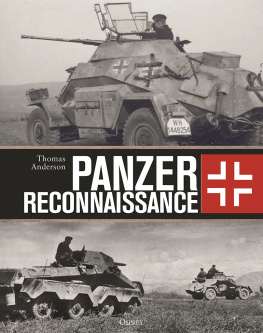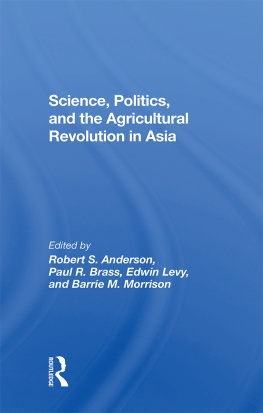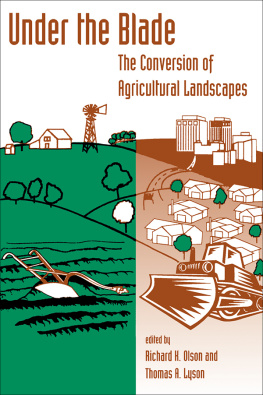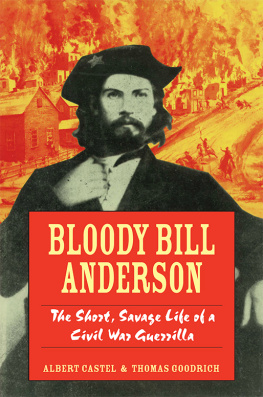Thomas Anderson - Elements of Agricultural Chemistry
Here you can read online Thomas Anderson - Elements of Agricultural Chemistry full text of the book (entire story) in english for free. Download pdf and epub, get meaning, cover and reviews about this ebook. year: 1860, publisher: CreateSpace Publishing, genre: Science. Description of the work, (preface) as well as reviews are available. Best literature library LitArk.com created for fans of good reading and offers a wide selection of genres:
Romance novel
Science fiction
Adventure
Detective
Science
History
Home and family
Prose
Art
Politics
Computer
Non-fiction
Religion
Business
Children
Humor
Choose a favorite category and find really read worthwhile books. Enjoy immersion in the world of imagination, feel the emotions of the characters or learn something new for yourself, make an fascinating discovery.

- Book:Elements of Agricultural Chemistry
- Author:
- Publisher:CreateSpace Publishing
- Genre:
- Year:1860
- Rating:5 / 5
- Favourites:Add to favourites
- Your mark:
- 100
- 1
- 2
- 3
- 4
- 5
Elements of Agricultural Chemistry: summary, description and annotation
We offer to read an annotation, description, summary or preface (depends on what the author of the book "Elements of Agricultural Chemistry" wrote himself). If you haven't found the necessary information about the book — write in the comments, we will try to find it.
Elements of Agricultural Chemistry — read online for free the complete book (whole text) full work
Below is the text of the book, divided by pages. System saving the place of the last page read, allows you to conveniently read the book "Elements of Agricultural Chemistry" online for free, without having to search again every time where you left off. Put a bookmark, and you can go to the page where you finished reading at any time.
Font size:
Interval:
Bookmark:

EDINBURGH:
ADAM AND CHARLES BLACK.
1860.
1st November 1860.
Introduction
CHAPTER I.
The Organic Constituents of Plants.
Carbon ... Carbonic Acid ... Hydrogen ... Nitrogen ... Nitric Acid ... Ammonia ... Oxygen ... Sources whence obtained ... The Atmosphere ... The Soil ... Source of the Inorganic Constituents of Plants ... Manner in which the Constituents of Plants are absorbed
CHAPTER II.
The Proximate Constituents of Plants.
The Saccharine and Amylaceous Constituents ... Cellulose ... Incrusting Matter ... Starch ... Lichen Starch ... Inuline ... Gum ... Dextrine ... Sugar ... Mucilage ... Pectine and Pectic Acid ... Oily or Fatty Matters ... Margaric, Stearic, and Oleic Acids ... Wax ... Nitrogenous or Albuminous Constituents of Plants and Animals ... Albumen ... Fibrine ... Casein ... Diastase
CHAPTER III.
The Changes which take place in the Food of Plants during their Growth.
Changes occurring during Germination ... Changes during the After-Growth of the Plant ... Decomposition of Carbonic Acid ... Decomposition of Water ... Decomposition of Ammonia ... Decomposition of Nitric Acid
CHAPTER IV.
The Inorganic Constituents of Plants.
The Amount of Inorganic Matters in Different Plants ... The Relative Proportions of Ash in the Different Parts of Plants ... Influence of the Nature of the Soil on the Proportion of Mineral Matters in the Plant ... The Composition of the Ashes of Plants ... Classification of Different Plants
CHAPTER V.
The SoilIts Chemical and Physical Characters.
The Origin of Soils ... Composition of Crystalline and Sedimentary Rocks ... their Disintegration ... Chemical Composition of the Soil ... Fertile and Barren Soils ... Mechanical Texture of Soils ... Absorbent Action of Soils ... their Physical Characters ... Relation to Heat and Moisture ... The Subsoil ... Classification of Soils
CHAPTER VI.
The Improvement of the Soil by Mechanical Processes.
Draining ... Its Advantageous Effects ... Subsoil and Deep Ploughing ... Improving the Soil by Paring and Burning ... Warping ... Mixing of Soils ... Chalking
CHAPTER VII.
The General Principles of Manuring.
Fundamental Principles upon which Manures are applied ... Special and General Manures ... Importance of this distinction ... Views regarding the Theory of Manures ... Remarks on Special Manures ... Action of Manures on the Chemical and Physical Properties of a Soil ... Remarks on the Application of Manures
CHAPTER VIII.
The Composition and Properties of Farm-yard and Liquid Manures.
Farm-yard Manure ... Urine ... Composition of ... Dung ... Composition of ... Farm-yard Manure ... Composition of ... Management of Dung-Heaps ... Box-feeding ... Fermentation and application of Manure ... Liquid Manure ... Composition and application of ... Sewage Manure ... Its composition and application
CHAPTER IX.
The Composition and Properties of Vegetable Manures.
Rape-Dust, Mustard, Cotton and Castor Cake ... Composition of various Oil-Cakes ... Malt-Dust, Bran, Chaff, etc.... Straw and Saw-dust ... Manuring with Fresh Vegetable Matter ... Green Manuring ... Sea-Weed ... Composition of various Sea-Weeds ... Leaves ... Peat
CHAPTER X.
The Composition and Properties of Animal Manures.
Guano, different varieties of ... Average composition of ... Division into Ammoniacal and Phosphatic ... Characters of ... Adulteration of ... Application of ... Pigeons' Dung ... Urate and Sulphated Urine ... Night-Soil and Poudrette ... Hair, Skin, Horn, Wool, etc.... Blood ... Fish ... "Fish-Guano"Bones
CHAPTER XI.
The Composition and Properties of Mineral Manures.
Mineral Manures ... Sulphate and Muriate of Ammonia ... Sulphomuriate of Ammonia ... Ammoniacal Liquor ... Nitrates of Potash and Soda ... Muriate and Sulphate of Potash ... Chloride of Sodium, or Common Salt ... Carbonates of Potash and Soda ... Silicates of Potash and Soda ... Sulphate of Magnesia ... Phosphate of Lime ... Bone-ash ... Coprolites ... Apatite ... Sombrero Guano ... Superphosphates and Dissolved Bones ... Biphosphate of Lime or Soluble Phosphates ... Phospho-Peruvian Guano ... Lime ... Chalk ... Marl ... Application and Action of Lime on Soils ... Sulphate of Lime or Gypsum
CHAPTER XII.
The Valuation of Manures.
The Principle on which Manures are valued ... Its application to different simple and complex Manures ... Method of Calculation ... General Remarks
CHAPTER XIII.
The Rotation of Crops.
Its necessity explained ... Quantity of Mineral Matters in the produce of an Acre of Different Crops ... The Theory of Rotation
CHAPTER XIV.
The Feeding of Farm Stock.
The Principles of Feeding ... The Composition of different Animals in different stages of Fattening ... The Composition of the Food of Animals ... Milk ... The Principal Varieties of Cattle Food ... General Observations on Feeding
Font size:
Interval:
Bookmark:
Similar books «Elements of Agricultural Chemistry»
Look at similar books to Elements of Agricultural Chemistry. We have selected literature similar in name and meaning in the hope of providing readers with more options to find new, interesting, not yet read works.
Discussion, reviews of the book Elements of Agricultural Chemistry and just readers' own opinions. Leave your comments, write what you think about the work, its meaning or the main characters. Specify what exactly you liked and what you didn't like, and why you think so.










